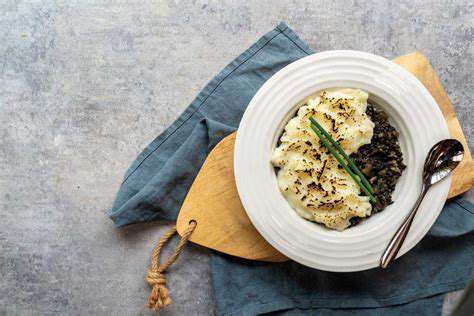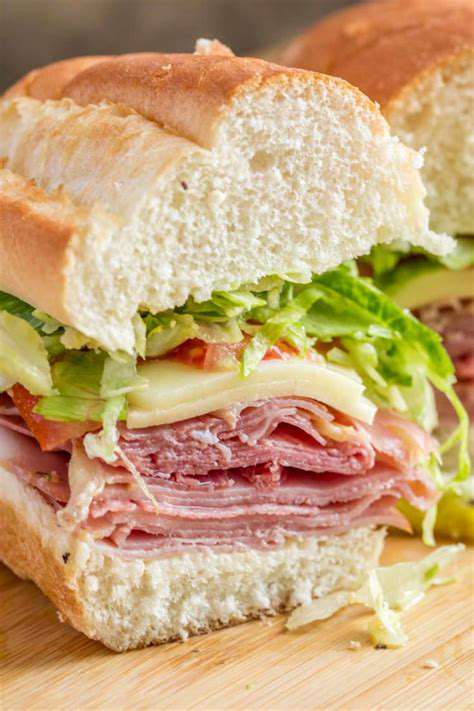Quick & Easy Lunches: Delicious and Nutritious

Leftovers: A Culinary Second Chance
Many people overlook the potential of leftovers, dismissing them as mere remnants of past meals. Yet, these forgotten ingredients hold untapped culinary possibilities. Repurposing leftovers isn't just thrifty - it's an art form that combats food waste while stretching your grocery budget. With some imagination, last night's meal components can become today's gourmet lunch.
From Pasta to Pizza: Re-purposing Pasta Dishes
Pasta frequently ends up in the leftover category, but it's remarkably adaptable. By simply changing the sauce or adding fresh ingredients, you can create an entirely new dish. For instance, yesterday's pesto pasta transforms beautifully when combined with grilled chicken and crisp vegetables. This method not only reduces waste but also boosts nutritional value through added protein and fiber.
Savory Soups and Stews: A Hearty Solution
Leftover proteins and vegetables serve as excellent foundations for rich soups and stews. That leftover roast chicken or beef adds incredible depth when simmered with broth and vegetables. A judicious blend of herbs and spices can completely reinvent the flavor profile, making it unrecognizable from its original form. This approach works particularly well with root vegetables that develop deeper flavors when cooked twice.
Stir-fries and Noodles: A Quick and Easy Fix
When time is limited, stir-fries offer the perfect canvas for leftovers. Toss any remaining proteins and vegetables with fresh noodles and your favorite sauce for an instant meal. Leftover rice shines when stir-fried with eggs and vegetables, creating a completely new dish with minimal effort. The high heat cooking method preserves nutrients while adding exciting textures.
Risotto and Fried Rice: Elevating the Ordinary
Day-old risotto takes on new life when shaped into croquettes or baked with cheese. Similarly, leftover rice becomes the star in fried rice dishes with the addition of fresh ingredients. The key lies in treating leftovers not as limitations but as opportunities for culinary experimentation. Different vegetables, proteins, and seasonings can create endless variations from the same base ingredient.
Salads and Wraps: A Light and Fresh Option
Leftover proteins become salad superstars when paired with fresh greens and vibrant dressings. Grilled chicken or fish adds substance to leafy greens, while leftover grains create satisfying wraps. This approach delivers a nutritional upgrade by incorporating more fresh vegetables into your meals. The contrast of temperatures and textures makes these transformations particularly appealing.
Savory Quiches and Frittatas: A Perfect Brunch or Lunch
Egg-based dishes provide the perfect vehicle for repurposing leftovers. A frittata can incorporate virtually any combination of leftover vegetables, cheeses, and meats. The beauty of these dishes lies in their ability to unify disparate ingredients into a cohesive, delicious meal. They're equally suitable for brunch gatherings or packed lunches, making them versatile solutions for leftover ingredients.
Protein Power Bowls for a Complete Meal
Fuel Your Day with Protein Power Bowls
Protein bowls represent a revolution in convenient, nutritious eating, offering balanced meals for time-strapped individuals. These customizable creations combine lean proteins with nutrient-dense ingredients to provide sustained energy. The strategic combination of macronutrients promotes satiety while supporting metabolic health.
Their adaptability makes them suitable for various dietary approaches, from keto to plant-based regimens.
The Importance of Protein in Your Diet
As the building block of muscles and tissues, protein plays an irreplaceable role in bodily functions. Adequate protein intake supports immune health, hormone production, and cellular repair. Nutrient-dense bowls containing quality proteins help regulate blood sugar levels and prevent energy dips between meals.
Selecting diverse protein sources ensures a complete amino acid profile while keeping meals interesting.
Crafting Your Perfect Protein Bowl
Constructing an ideal protein bowl begins with choosing a nutritious base. Ancient grains like farro or freekeh provide complex carbohydrates and fiber. Layer proteins such as grilled salmon, tempeh, or lean turkey for sustained energy. Incorporate a rainbow of vegetables to maximize phytonutrient intake, and don't forget healthy fats like olives or hemp seeds for optimal nutrient absorption.
Flavorful Combinations for Variety
Global flavor profiles keep protein bowls exciting. An Asian-inspired version might feature teriyaki-marinated tofu with bok choy and sesame seeds, while a Middle Eastern bowl could include spiced lamb with tabbouleh and tahini. The versatility of these bowls allows for seasonal ingredient rotations, ensuring you never tire of this meal format.
Boosting Your Bowl with Healthy Fats
Incorporating quality fats transforms a good bowl into a great one. Avocado provides creaminess and heart-healthy monounsaturated fats, while nuts add crunch and omega-3s. These fats enhance flavor while promoting absorption of fat-soluble vitamins present in the vegetables. Balanced fat inclusion is crucial for both satisfaction and nutritional optimization.
Easy Preparation for Busy Weekdays
Meal prepping components makes weekday bowl assembly effortless. Cook grains in batches, roast vegetables in quantity, and pre-portion proteins for grab-and-go convenience. Having dressings pre-made in small containers streamlines the process further. This systematic approach ensures nutritious meals even during the busiest schedules.
Simple Sandwiches and Subs: Classic Comfort Food Made Quick

Simple Sandwich Essentials
The foundation of any great sandwich begins with thoughtful bread selection. Artisanal breads with substantial crumb structure support robust fillings without compromising texture. Matching bread type to filling density creates harmonious sandwich experiences. Sourdough's tang complements rich meats, while focaccia's olive oil richness pairs beautifully with Mediterranean flavors.
Ingredient quality directly correlates with sandwich satisfaction. Farmers' market vegetables, house-roasted meats, and small-batch condiments elevate humble sandwiches to gourmet status. Superior ingredients require minimal embellishment to shine.
Choosing the Perfect Fillings
Filling selection should consider texture contrasts and flavor balance. Combining crisp vegetables with creamy spreads and savory proteins creates multidimensional sandwiches. Unconventional pairings like roasted pear with blue cheese or pulled pork with apple slaw demonstrate how contrasting flavors create memorable sandwiches.
Building the Sandwich or Sub
Structural integrity depends on strategic layering. Place moisture-resistant ingredients like cheese or lettuce against the bread to create a barrier. Distribute fillings evenly to prevent collapsing. Proper construction ensures each bite contains all components in perfect proportion. For subs, slightly hollowing out the bread creates more filling capacity without sogginess.
Adding Flavor with Toppings
Thoughtful garnishes provide the finishing touches that distinguish ordinary sandwiches from extraordinary ones. Quick-pickled vegetables add brightness, while specialty mustards contribute complexity. A single bold ingredient like truffle aioli or smoked salt can transform the entire sandwich experience. Fresh herb garnishes provide aromatic highlights that awaken the palate.
Serving and Enjoying Your Creation
Presentation matters, even for casual sandwiches. Diagonal cutting exposes beautiful layers, while thoughtful plating enhances anticipation. The sensory experience of a well-made sandwich engages sight, smell, and taste simultaneously. Pair with crisp pickles or kettle chips for textural contrast, and consider beverage pairings that complement the sandwich's flavor profile.
- Healthy Meal Prep for Weight Loss: 5 Days of Deliciousness
- Buying Organic Produce: Is It Worth the Cost?
- Authentic Portuguese Custard Tarts: Pastel de Nata
- Unveiling Japanese Street Food: Takoyaki and Okonomiyaki
- Vegetarian Dinner Party Ideas: Impress Your Guests
- Storing Coffee Beans for Brewing: Best Practices
- Vegan Lunch Ideas for Work: Easy and Convenient
- Authentic Mexican Street Tacos: Carnitas Recipe
- Cooking with Electric Grill: Indoor Grilling
- Homemade Granola Bars: Healthy and Portable
- Simple Lunch Ideas: Quick and Delicious
- Simple Chicken Stir Fry: Quick and Healthy